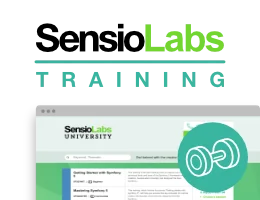How to Create your Custom Normalizer
The Serializer component uses normalizers to transform any data into an array. The component provides several built-in normalizers but you may need to create your own normalizer to transform an unsupported data structure.
Creating a New Normalizer
Imagine you want add, modify, or remove some properties during the serialization
process. For that you'll have to create your own normalizer. But it's usually
preferable to let Symfony normalize the object, then hook into the normalization
to customize the normalized data. To do that, you can inject a
NormalizerInterface and wire it to Symfony's object normalizer. This will give
you access to a $normalizer property which takes care of most of the
normalization process:
1 2 3 4 5 6 7 8 9 10 11 12 13 14 15 16 17 18 19 20 21 22 23 24 25 26 27 28 29 30 31 32 33 34 35 36 37 38 39 40 41 42
// src/Serializer/TopicNormalizer.php
namespace App\Serializer;
use App\Entity\Topic;
use Symfony\Component\DependencyInjection\Attribute\Autowire;
use Symfony\Component\Routing\Generator\UrlGeneratorInterface;
use Symfony\Component\Serializer\Normalizer\NormalizerInterface;
class TopicNormalizer implements NormalizerInterface
{
public function __construct(
#[Autowire(service: 'serializer.normalizer.object')]
private readonly NormalizerInterface $normalizer,
private UrlGeneratorInterface $router,
) {
}
public function normalize($topic, ?string $format = null, array $context = []): array
{
$data = $this->normalizer->normalize($topic, $format, $context);
// Here, add, edit, or delete some data:
$data['href']['self'] = $this->router->generate('topic_show', [
'id' => $topic->getId(),
], UrlGeneratorInterface::ABSOLUTE_URL);
return $data;
}
public function supportsNormalization($data, ?string $format = null, array $context = []): bool
{
return $data instanceof Topic;
}
public function getSupportedTypes(?string $format): array
{
return [
Topic::class => true,
];
}
}Registering it in your Application
Before using this normalizer in a Symfony application it must be registered as
a service and tagged with serializer.normalizer.
If you're using the default services.yaml configuration,
this is done automatically!
Performance of Normalizers/Denormalizers
To figure which normalizer (or denormalizer) must be used to handle an object, the Serializer class will call the supportsNormalization() (or supportsDenormalization()) of all registered normalizers (or denormalizers) in a loop.
Additionally, both
NormalizerInterface
and DenormalizerInterface
contain the getSupportedTypes() method. This method allows normalizers or
denormalizers to declare the type of objects they can handle, and whether they
are cacheable. With this info, even if the supports*() call is not cacheable,
the Serializer can skip a ton of method calls to supports*() improving
performance substantially in some cases.
The getSupportedTypes() method should return an array where the keys
represent the supported types, and the values indicate whether the result of
the supports*() method call can be cached or not. The format of the
returned array is as follows:
- The special key
objectcan be used to indicate that the normalizer or denormalizer supports any classes or interfaces. - The special key
*can be used to indicate that the normalizer or denormalizer might support any types. - The other keys in the array should correspond to specific types that the normalizer or denormalizer supports.
- The values associated with each type should be a boolean indicating if the
result of the
supports*()method call for that type can be cached or not. A value oftruemeans that the result is cacheable, whilefalsemeans that the result is not cacheable. - A
nullvalue for a type means that the normalizer or denormalizer does not support that type.
Here is an example of how to use the getSupportedTypes() method:
1 2 3 4 5 6 7 8 9 10 11 12 13 14 15
use Symfony\Component\Serializer\Normalizer\NormalizerInterface;
class MyNormalizer implements NormalizerInterface
{
// ...
public function getSupportedTypes(?string $format): array
{
return [
'object' => null, // Doesn't support any classes or interfaces
'*' => false, // Supports any other types, but the result is not cacheable
MyCustomClass::class => true, // Supports MyCustomClass and result is cacheable
];
}
}Note
The supports*() method implementations should not assume that
getSupportedTypes() has been called before.

